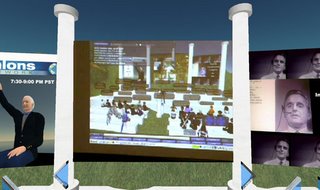
--- Steve Maich, "Pornography, gambling, lies, theft and terrorism: The Internet sucks", Maclean's Life article, 30-Oct-2006
If you're looking for balanced journalism in Canada's major news magazine, Maclean's, you won't find it in this piece of tripe. Sure, there are many reasons why the Internet currently can be a dangerous place. But to reduce all the benefits of world-wide connectivity to "The Internet sucks" is to be guilty of the same hyperbole that Maich so detests about those who promote the potential of the World Wide Web.
The Maclean's article is fundamentally flawed. But the problem is not so much the Maich is simply wrong. The problem is that his editorial isn't presented as such. Instead it appears as if it's the result of journalistic research. But anyone with a passing knowledge of recent history could have written this piece with a blindfold.
Comparisons with the dot.com fiasco, the recent Google purchase of YouTube, Napster's troubles, the almost-inevitable references to pornography and gambling, plus repetition of the most outrageous comments of nay-sayers of the past 10 to 15 years...well, you all could write this story without much more effort than say, preparing a blog entry ;>)
One example of journalistic imbalance is what Maich has to say about Wikipedia. His example is a minute-by-minute account of the encyclopedia entry about the death of Enron's CEO, Ken Lay on July 5th. The problems with Wikipedia's come-one-come-all approach to authoring on-line entries could have been summarized quite simply. If you were to read the edits to that entry between 10:00 am and 10:30 am on July 5th, you would have seen some mistakes propagated by the authors.
Still, one wonders what Maich thinks about the obvious comparisons between traditional encyclopedias and Wikipedia. To get recent information of substance is impossible with printed encyclopedias. If you're willing to wait for the next annual supplement, you just might find something there about Ken Lay in late 2007. But there would be no hyperlinking of information, no reference to key terms, no checks and balances implicit with the Wikipedia authorship model - one would have to be blind, deaf, and dumb not to appreciate the incredible benefits available to the entire world through Wikipedia. Maich instead latches on to a single miniscule problem without so much as a tip of the hat to the almost miraculous utility of the on-line encyclopedia phenomenon. Instead, he categorically calls the article "lies".
On a very personal level, Maich's complaints about the abundance of poor health information on the Internet is laughably narrow-sighted and narrow-minded. Over the past year, I have battled rectal cancer, enduring radiation, chemotherapy, surgery, and a month-long hospital stay owing to post-operative complications. During that year, the Internet has provided my surest source of communications, research, and personal therapy, no small part due to the abundance of useful medical information.
The core message of the Maclean's article is really about the danger posed to elitist publishers by bloggers who provide news and opinion for free or what Maich calls the "echo chamber". Journalists are running scared and Maich proves it. Bloggers are the most symbolic problem with the Internet.
"For everything the Web has simplified, accelerated, and proliferated, there is at least as much that it has destroyed..." - that's all you really need to read from the Maclean's article. I hope Maich gets a chance to read the blogs and Internet articles his diatribe has unleashed.






